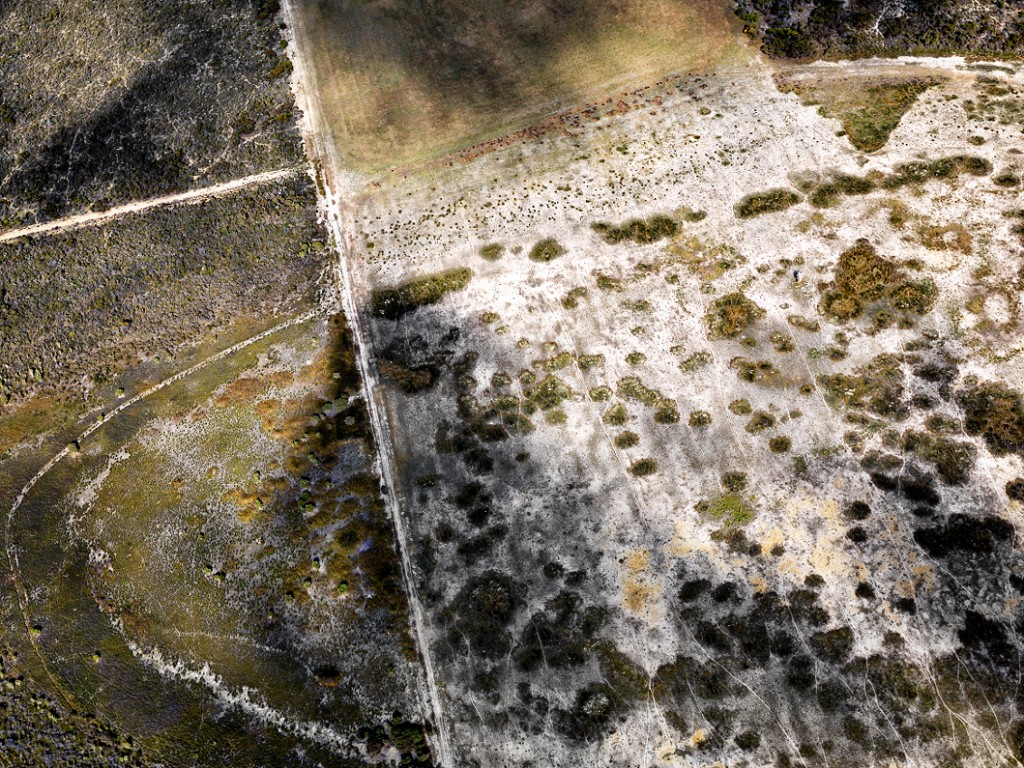Colliding Worlds, Pigment Print, 127 x 170cm, 2011
A recent book review described him as “unquestionably one of the best-known, most prolific and most published photographers of the twentieth century” … but although his “work earned him fame around the world, in recent decades it has often been derided by critics and curators as overly commercial, and too easily accessible”, and therefore “not sufficiently serious”. As a result, his reputation has suffered in “comparison with a younger generation of photographers”.
Undoubtedly he was a serious photographer, but as the absent voice discloses, it remains what others consider we seriously endeavour that determines our reputation. How we value and represent what we do remains as important as what we do.
The often excused ‘letting the work speak for itself’ is doubly cursed because it both abdicates responsibility, perpetuating the myth that the creative process is beyond rational enquiry, and abandons local knowledge in favour of work that risks going missing in translation. By detaching the artwork from its means of production, it abandons the flux of ideas, emotions, desires, thinking and doing that has created the work.
I was born into a culture where modernism and formalism were tied to the universal claims implied in aesthetic judgements, where works of art were considered the embodiment of aesthetics, and presented as signs of social distinction and superior taste. Today we understand such claims as an abuse of Western power prevailing in the name of a universal humanity that glosses over local difference, contradiction and conflict.
If the reaction of the 1980s was the embodiment of the anti-aesthetic, and the 1990s a return to representation, then the first decade of the 21st century has questioned our allegiance to the past and responsibility in the present.
We encode our ignorance and the displacement of those around us in works of art when we champion only indifference, familiarity and disinterested contemplation. Henceforth things cannot be as before.



{ 4 comments… read them below or add one }
Les I have always struggled with the concept of others validating or passing judgement on an individuals work without knowing the context. I find it fascinating to sit in on print judging awards when the judges read all sorts of meaning in to an image, with no background information, generating stories which are well off the mark.
Your Colliding Worlds image here affects me even on a small scale, I would love to see the full size print, I can imagine the far and near detail being quite fascinating. And I need to know more about how it came about!
Hi Les.
I’m curious, what led you to post those thoughts?
Les,
could you unpack what you mean by the phrase: “if the reaction of the 1980s… [etc]…. “then the first decade of the 21st century has questioned our allegiance to the past and responsibility in the present.”
How did this happen? In what way? Who has done this in photography?
You know Les, (as you know me) I am not really an academic, nor someone who has immersed themselves and fused themselves together with a world of art photography. I have had few shows and I am a competent photographer with aspirations beyond current capability.
That being the case, it is useful to read this post from the position as an outsider.
My comments may be altruistic and to some ignorant. For me they are quite clear, and although not placed into an artistic language or logic (context perhaps) – they are from years of being around art, and in particular the current Pharos in Australia – Aboriginal Art.
So:
It is interesting that no-one seems to write too much on the clarity and wisdom of critics. Whether they are considered and then published to be of relevance to a broader community (or not) is something Ive not seen a lot of. The art world is a mature one. Positions are taken and there are artists and there are the observers and commentators of artists.
I wonder who can be attributed to the quoted text. And would it matter. What was the context of their observation – and was it correct. What IS correct in this instance ? And in the end, who cares ? I don’t think either quote is exact, and I don’t think they are correct. Who in this instance carries gravitas. And why – and is that legitimate.
Context is (to me) the ‘thing’ that magnificently supports curators and critics form linkages between things they don’t easily understand. It can help connect things that are and should be disconnected. If taken too far – its role in understanding art/photography/human markings could be described as artifice leading to the creation of an illusion. Like the Emperor’s new clothes.
Here in NYC at present time – a photographer is being applauded for their ‘appropriation’ photographs. They’ve photographed other peoples photographs and reproduced them same size. One piece of media showed the artist (?) holding both an original and a copy. Copy – because that was what it was. Some doofus wrote about it lauding the copies as appropriated art. Bull****
A copy – nothing more or less. But ah! CONTEXT makes it something else. Perhaps something special.
Will history remember this ?
If we need context to understand images, we can all disappear up our own anatomy with all that and start believing anything we like. I wonder what deKooning, Rothko or Pollock, Sommer and Siskind and Herzog – or Greenberg, Hughes and Sontag would say..
And as far as producing work that is inaccessible in order to be of contemporary relevance – that too is a comment perhaps from image weary thinkers who need more in order to feel sated in their jobs. Perhaps they need to think and look harder. There is extraordinary things in the every day. Unbelievable. (Im reminded of that somewhat trite Diamonsteen video interview with Frederick Sommer – and what he says about nature’s visual logic). What does it say about a tired world that seems always to want more.
Back to context – I have sat with painters Rosie Goodjie and other elderly and in some cases heavily failing Aboriginal Artists in the silence of the Great Western Desert. After I became somewhat matured to the incredible privilege – I sat and stopped asking all those ‘what why when where how’ questions – those questions from an imperialist logic. Because frequently the most relevant images they made – they couldn’t speak to. Either because it was too sacred, or because they themselves didn’t have the aboriginal or white fella language to describe. The point is – some things just have to be seen for what they are, and its that space between the optic nerve and the surface of the art that does the work. That won’t suit a curator or a critic – whose lives are frequently paid, like lawyers used to be according to the words they utter.
I would say to an observer or critic who needs context. “Grow up or get a new job”.
I am reminded through all this by 6 months work I did for Painter Printmaker
Bea Maddock on her bi-centenary commission. The 7 panel painting features a photograph I printed for her 21 times. As the work began to conclude, the critics and others started to make contact and ask about the painting. The answer was increasingly firm to a point of being very angry indeed. “The work speaks for itself.. the work speaks for itself.. It is all about the work and nothing else”. At the end of her career – she is still doggedly insisting the same.